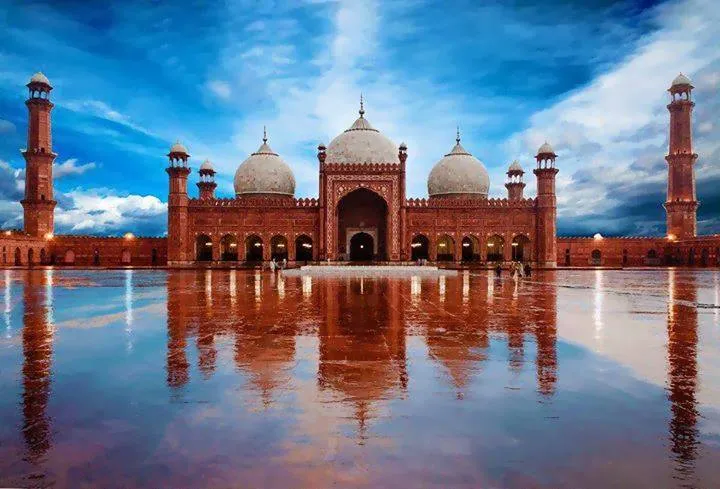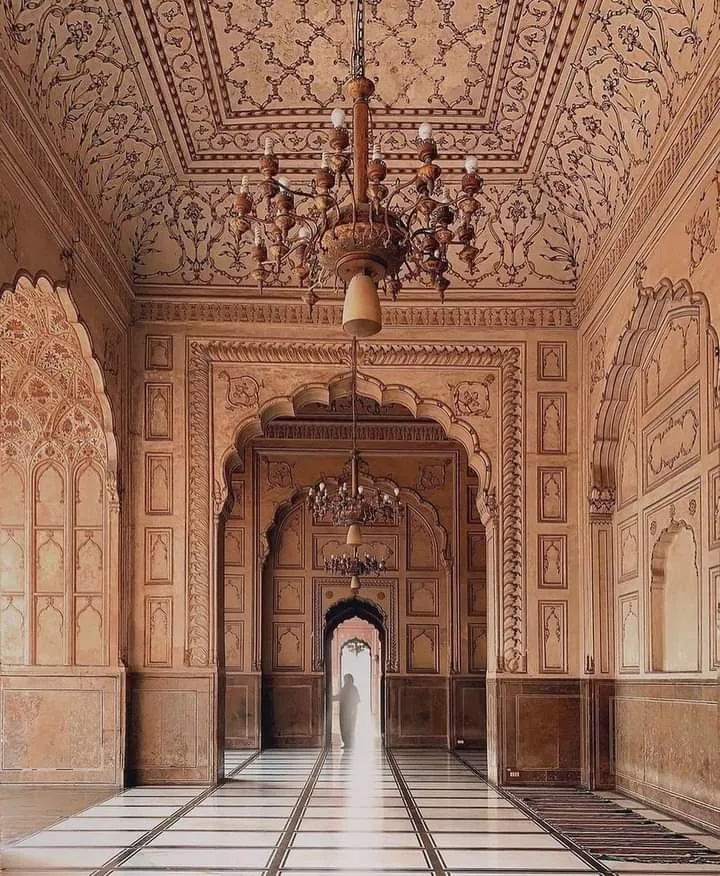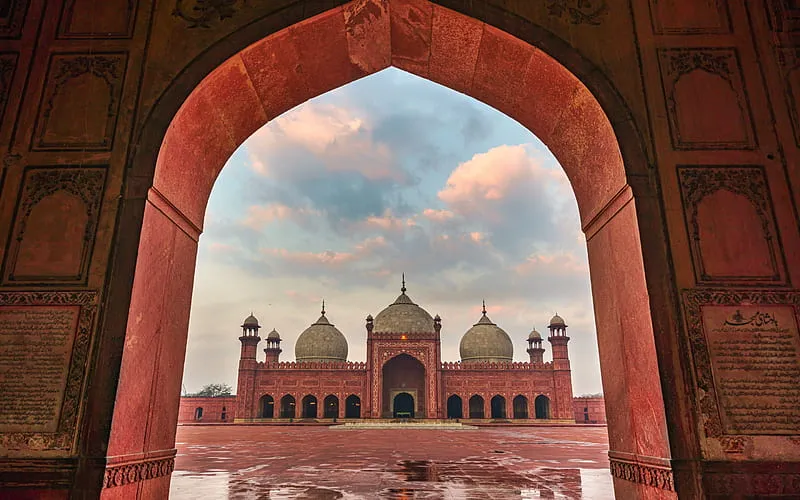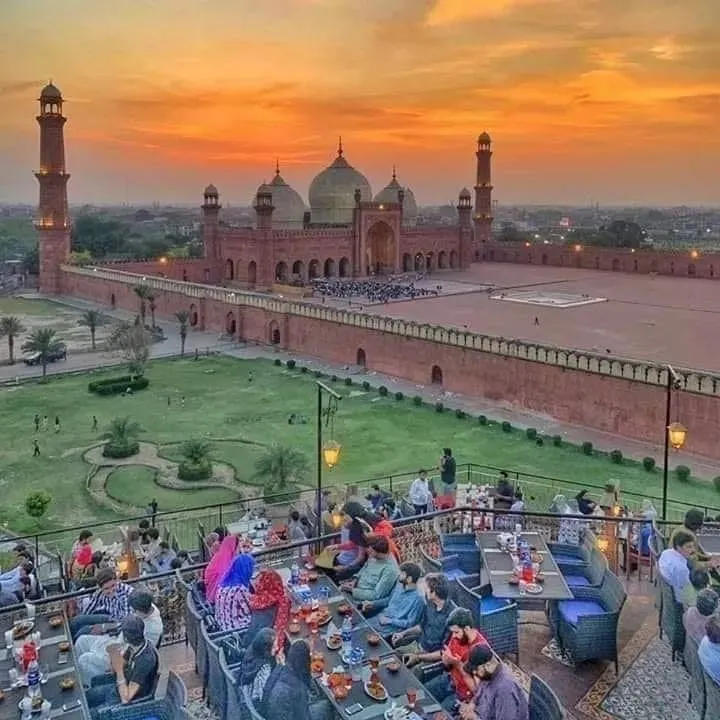Hy! hopefully everyone is having a good day.Friends today I am going to share little bit about one of the great Classic Art of Lahore ,The Badsahi Masjid.
Badshahi Mosque stands across the Hazuri Bagh from Lahore Fort.
The Badshahi Mosque was constructed by the Mughal emperor Aurangzeb between 1671 and 1673 and was the largest mosque in the world from 1673 to 1986. The mosque is an important example of Mughal architecture, with an exterior that is decorated with carved red sandstone with marble inlay. It remains the largest mosque of the Mughal-era, and is the third-largest mosque in Pakistan.After the fall of the Mughal Empire, the mosque was used as a garrison by the British Empire, and is now one of Pakistan's most iconic sights.


Badshahi Mosque is renowned for the carved marble and elaborate plasterwork that are used throughout the mosque's interi.

Entrance to the mosque complex is via a two-storey edifice built of red sandstone which is elaborately decorated with framed and carved paneling on each of its facades.The edifice features a muqarna, an architectural feature from the Middle East that was first introduced into Mughal architecture with construction of the nearby and ornate Wazir Khan Mosque.
The mosque's full name "Masjid Abul Zafar Muhy-ud-Din Mohammad Alamgir Badshah Ghazi" is written in inlaid marble above the vaulted entrance.The mosque's gateway faces east towards the Alamgiri Gate of the Lahore Fort, which was also commissioned by Aurangzeb. The massive entrance and mosque are situated on a plinth, which is ascended by a flight of 22 steps at the mosque's main gate which. The gateway itself contains several chambers which are not accessible to the public. One of the rooms is said to contain hairs from the Prophet Muhammad's, and that of his son-in-law Ali.


Some of the characteristic features of are:
Architecture:
Nawab Zain Yar Jang Bahadur
Opened:
1673
Architectural styles:
Islamic architecture, Mughal architecture, Indo-Islamic architecture
Capacity:
100,000
Height:
69 m
Minaret(s):
8 (4 major, 4 minor)
Thanks for stopping by and having look on my post.